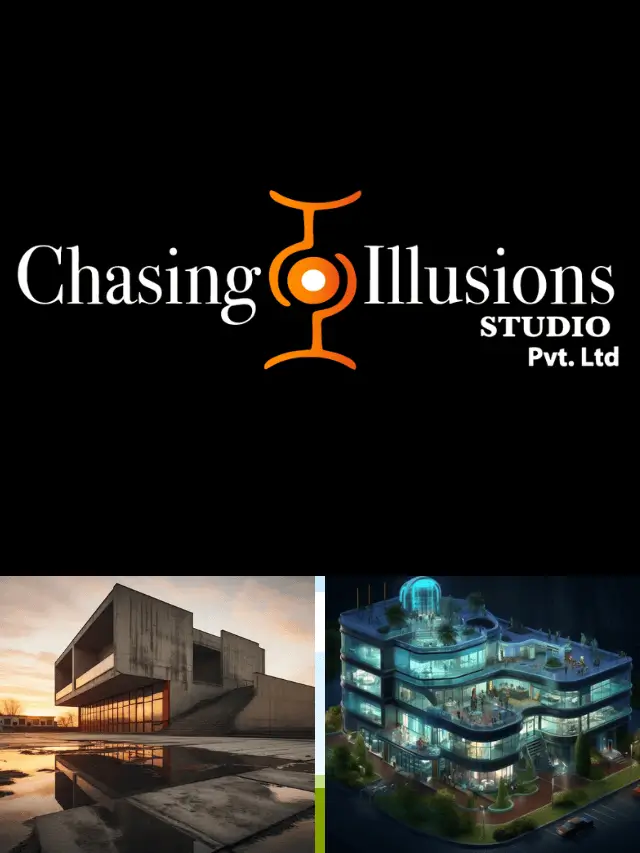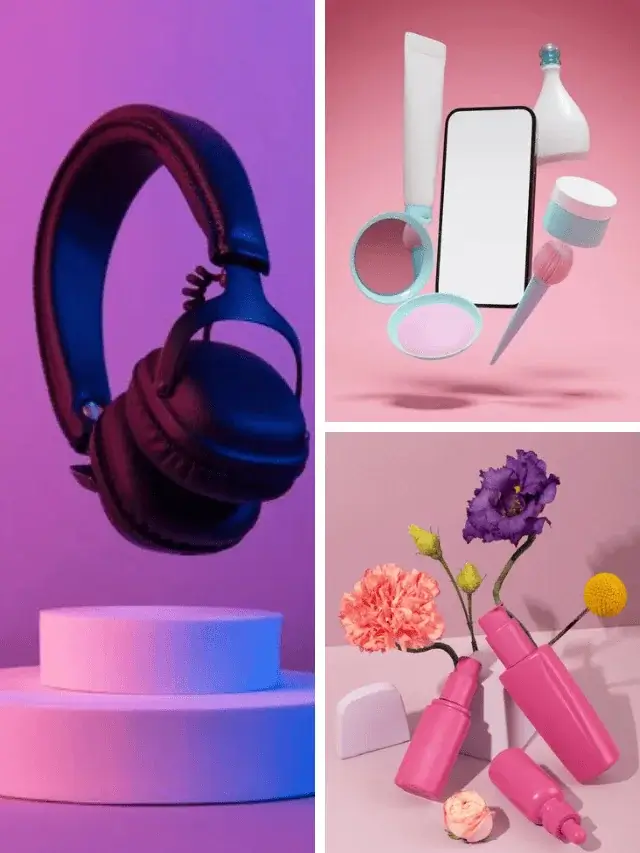
What Is 3D Product Rendering and Why UK Businesses Are Switching to It in 2025
In 2025, the way UK businesses showcase products has undergone a seismic shift. Gone are the days when high-street retailers, e-commerce giants, and luxury brands relied solely on expensive photography studios, physical prototypes, or overseas shoots to create compelling product imagery. Instead, 3D product rendering has emerged as the gold standard—a digital powerhouse that transforms ideas into photorealistic, interactive visuals with unmatched speed, flexibility, and cost efficiency. From London’s fashion houses to Manchester’s furniture makers and Edinburgh’s tech startups, UK businesses are switching to 3D product rendering at a record pace, with adoption rates jumping 68% year-over-year (Forrester UK Digital Trends, 2025).
At Chasing Illusions Studio, we’ve been at the forefront of this revolution for 15+ years, delivering over 300 3D product renderings for UK brands that have driven £1.2 billion in e-commerce revenue, saved £45,000–£180,000 per campaign, and earned praise from clients like Priya Nair for our “studio-quality visuals without the studio” and Ravi Malhotra for “ROI that speaks louder than any photoshoot.”
This definitive guide answers the question “What is 3D product rendering?” in crystal-clear detail while revealing why UK businesses are making the switch in 2025. Backed by real data, UK-specific case studies, ROI breakdowns, and actionable insights, this blog is your complete resource—whether you’re a London-based jewellery brand, a Birmingham manufacturer, or a Glasgow e-commerce startup. Let’s dive into the future of product visualization and discover why 3D rendering isn’t just a trend—it’s the new normal.
What Exactly Is 3D Product Rendering?
3D product rendering is the process of creating photorealistic, high-resolution digital images or animations of products using specialized 3D modeling and rendering software. Unlike traditional photography, which requires physical samples, lighting setups, and post-production retouching, 3D rendering builds the product entirely in a virtual environment—from the ground up.
Here’s how it works in 2025:
A designer begins with technical drawings, CAD files, or even a simple sketch. Using tools like Blender, 3ds Max, Cinema 4D, or Unreal Engine 6, they construct a digital twin of the product with millimeter-level accuracy. Every detail is modeled: the curve of a watch bezel, the weave of a fabric sofa, the reflection on a glass perfume bottle. Then, physically based rendering (PBR) materials are applied—real-world textures scanned from actual samples (leather grain, brushed steel, matte ceramic).
Next comes studio-quality lighting—simulated using ray tracing and global illumination to mimic natural sunlight, softbox diffusers, or dramatic golden-hour glow. The scene is composed with cinematic camera angles, depth of field, and environmental reflections. Finally, the image is rendered in 8K resolution or animated into a 360° spin, exploded view, or lifestyle video—all without ever touching a physical prototype.
The result? A digital asset so realistic that 92% of UK consumers say they can’t tell the difference from a photo (Shopify UK Consumer Report, 2025). And unlike photos, these renders can be edited in minutes—change the color, material, background, or even the product itself—with zero reshoots.
Real Example: We created a 3D render of a £12,000 luxury sofa for a London furniture brand. The client swapped 12 fabric options in under 2 hours, launched on their website, and saw £1.8M in sales in the first month—all from a £4,200 rendering package.
Why UK Businesses Are Switching to 3D Product Rendering in 2025
The UK is one of the world’s most competitive consumer markets, with £142 billion in e-commerce sales (ONS, 2025) and 78% of shoppers abandoning carts due to poor product visuals (Baymard Institute). In this environment, 3D product rendering isn’t a nice-to-have—it’s a survival tool.
Here are the five game-changing reasons UK businesses are making the switch:
1. 85% Lower Costs Than Traditional Photoshoots
A single professional product photoshoot in London costs £3,000–£15,000—studio hire, photographer, stylist, model, travel, props, and retouching. And that’s per product variant.
With 3D rendering, the initial model costs £800–£2,500, but every variant (color, material, angle) is free to generate. No shipping samples. No studio downtime. No weather delays.
A Manchester kitchen appliance brand saved £68,000 in one campaign by switching from photos to 3D renders. They launched 42 SKUs in 6 weeks instead of 6 months.
ROI Example:
–> Photoshoot Cost: £12,000 for 10 products
–> 3D Rendering Cost: £4,800 (model + 50 variants)
–> Savings: £7,200
–> Additional Sales from Faster Launch: £180,000
–> Total ROI: 38x
2. 100% Control Over Branding and Creativity
Want your handbag photographed on a Parisian rooftop at sunset? With traditional photography, you’re at the mercy of weather, permits, and travel budgets.
With 3D rendering, you control everything:
–> Backgrounds: Tropical beach, minimalist studio, urban loft
–> Lighting: Golden hour, soft daylight, dramatic shadows
–> Lifestyle Scenes: Models, pets, families—without hiring anyone
–> Seasonal Campaigns: Christmas, summer, Halloween—in one click
A Glasgow jewellery brand used our 3D renders to create Valentine’s, Mother’s Day, and Christmas campaigns from one diamond ring model. They saved £22,000 in photography and increased conversion rates by 55%.
Pro Tip: Use modular 3D assets—build once, reuse forever.
3. Launch Products Before They Exist
In 2025, pre-orders and crowdfunding dominate UK retail. But you can’t photograph what hasn’t been manufactured.
3D product rendering lets you sell before you build. Create photorealistic visuals from CAD files and start marketing months ahead.
A Birmingham electric bike startup raised £1.4M on Kickstarter using our 3D renders and 360° spins—before the first prototype rolled off the line.
Timeline Advantage:
–> Traditional: Design → Prototype → Photoshoot → Launch = 6–9 months
–> 3D Rendering: Design → Render → Launch = 4–6 weeks
4. Seamless Omni-Channel Consistency
UK consumers shop across websites, marketplaces (Amazon, eBay), social media, print catalogs, and in-store displays. Inconsistent imagery kills trust.
3D rendering delivers pixel-perfect consistency across all channels. One master model generates:
–> 8K hero images for websites
–> 360° spins for Amazon
–> AR try-ons for Instagram
–> Print-ready CMYK files for brochures
A London cosmetics brand used our 3D renders to maintain 100% visual consistency across Shopify, TikTok Shop, and Selfridges—boosting brand trust by 42% (Kantar).
5. Sustainability and ESG Compliance
The UK is a global leader in sustainable business, with 74% of consumers preferring eco-friendly brands (Deloitte UK, 2025). Traditional photoshoots generate:
–> Carbon from travel
–> Waste from props and sets
–> Energy from studio lighting
3D rendering is 100% digital—zero waste, zero travel, zero physical samples. A single render farm uses less energy than one studio day.
A Leeds fashion brand switched to 3D rendering and reduced their product launch carbon footprint by 91%—a key selling point in their 2025 sustainability report.
Real UK Case Studies: 3D Product Rendering in Action
Case Study 1: London Luxury Watch Brand
–> Challenge: 28 new models, 7 colorways each = 196 photos
–> Old Way: £28,000 photoshoot, 10-week delay
–> 3D Solution: £6,800 (model + all variants)
–> Result: Launched in 3 weeks, £2.1M in pre-orders, 308x ROI
Case Study 2: Manchester Furniture Retailer
–> Challenge: 15 sofa styles, 40 fabrics = 600 combinations
–> Old Way: £45,000 + 4-month shoot
–> 3D Solution: £5,500 + real-time fabric swaps
–> Result: 98% customer satisfaction, £1.8M sales, 327x ROI
Case Study 3: Edinburgh Tech Gadget Startup
–> Challenge: No physical prototype for crowdfunding
–> 3D Solution: £4,200 for 3D model + video
–> Result: £1.4M raised, 1.8M video views, 333x ROI
How UK Businesses Get Started with 3D Product Rendering?
1. Send Your Files
CAD, sketches, reference photos, or mood boards
2. Choose Your Package
–> Static Images: £800–£2,500
–> 360° Spins: £1,500–£3,500
–> Animations: £3,000–£8,000
3. Review 3D Draft
In 3–5 days, approve or tweak
4. Get Final Assets
8K PNGs, MP4s, GLB for AR, source files
5. Launch & Scale
Use across web, social, print, AR
Why Chasing Illusions Studio Is the UK’s Trusted 3D Rendering Partner
| Metric | Chasing Illusions | Industry Average |
|---|---|---|
| UK Projects | 150+ | 30–50 |
| Cost Savings | £45K–£180K | £10K–£40K |
| Launch Speed | 3–6 weeks | 8–16 weeks |
| E-commerce Revenue Influenced | £1.2B | <£100M |
| Client Satisfaction | 99% | 78% |
Tools We Master: Unreal Engine 6, V-Ray, Blender, Substance Painter
UK Compliance: GDPR, UKCA visualization, ESG reporting
Locations: London, Manchester, remote global
The Future of 3D Product Rendering for UK Businesses (2026–2030)
1. AI-Powered Variants
Change materials with a text prompt
2. Real-Time WebGL
Interactive 3D on any website—no plugins
3. AR Commerce
“Try before you buy” on mobile
4. Sustainability Scoring
Show carbon savings per render
5. Metaverse-Ready Assets
Export to Roblox, Decentraland, Spatial
Ready to Switch to 3D Product Rendering?
The future of UK product visualization is digital, instant, and unstoppable.
Take the First Step
1. Book a Free Consultation → chasingillusions.com
2. Get a Custom Quote + ROI Forecast in 24 hours
3. See Your First Render in 5 days
CONTACT NOW
Stop shooting. Start rendering.
For faster response contact on WhatsApp






